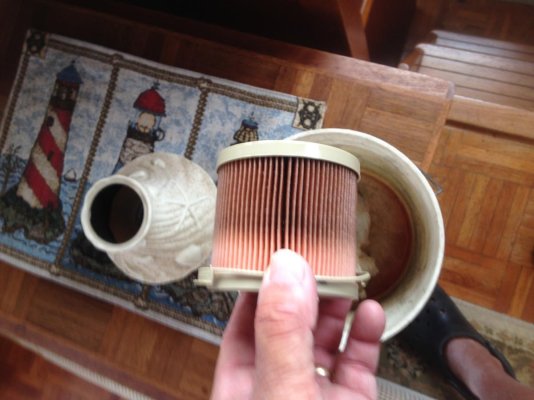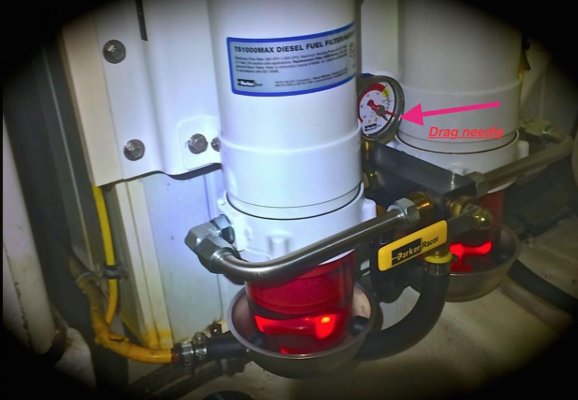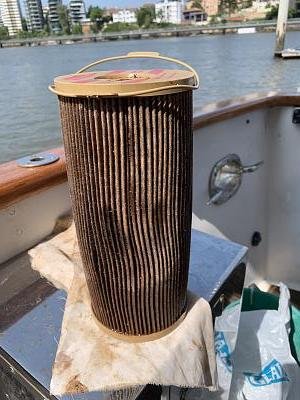GB32
Member
With a Racor 2 Filter set-up with the left. right and both valve - How often do you change filters?
I have one on-line until changed at the next service. The one that has been standby then becomes the active filter.
Service is done yearly so each filter has had one year standby, (flooded with fuel), and one year online.
I have never had a problem with fuel - or the hint or a problem, and I don't use additives. Starboard tank supplies the engine, Port tank is isolated and fuel polished when the swell gets up. Fuel transferred when the trim changes.
Changing one filter for the engine and one for the polisher per year seems to work for me - and is cost effective.
Am I missing something?
Is there actual guidance on using this set-up?
Racor filters have' Aquablock' media. I've never seen a limit on the time a Racor filter can be immersed in fuel.
Comments welcome!
I have one on-line until changed at the next service. The one that has been standby then becomes the active filter.
Service is done yearly so each filter has had one year standby, (flooded with fuel), and one year online.
I have never had a problem with fuel - or the hint or a problem, and I don't use additives. Starboard tank supplies the engine, Port tank is isolated and fuel polished when the swell gets up. Fuel transferred when the trim changes.
Changing one filter for the engine and one for the polisher per year seems to work for me - and is cost effective.
Am I missing something?
Is there actual guidance on using this set-up?
Racor filters have' Aquablock' media. I've never seen a limit on the time a Racor filter can be immersed in fuel.
Comments welcome!


 i think that many change their filters too often although that certainly is a safe way to go.(Although "over kill" in my opinion.)
i think that many change their filters too often although that certainly is a safe way to go.(Although "over kill" in my opinion.)
